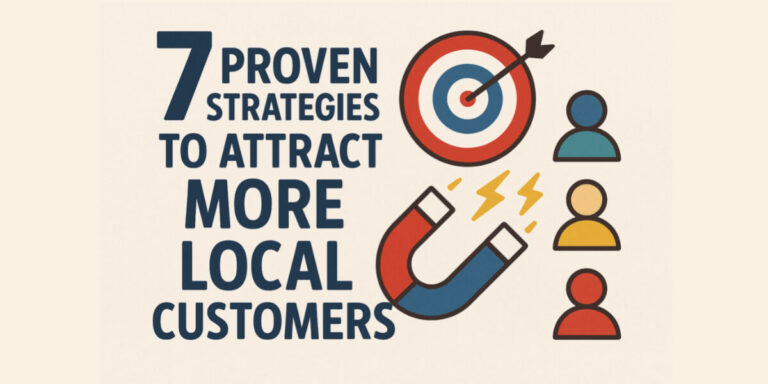
The highest-converting client acquisition funnels in 2025 leverage AI-powered personalization that adapts messaging to individual behavioral patterns in real-time, creating micro-moment interventions when prospects hesitate. You’ll need community-driven strategies that build trust through value-first engagement, paired with omnichannel experiences that eliminate friction across touchpoints. Privacy-compliant attribution models help you identify which interactions actually drive conversions, while authentic trust-building methodologies transform skeptical consumers into loyal clients. These advanced strategies unveil unprecedented conversion potential.
AI-Powered Personalization That Adapts to Individual Buyer Journeys

While traditional marketing casts a wide net hoping to catch interested prospects, AI-powered personalization transforms your client acquisition funnel into a precision instrument that adapts to each visitor’s unique behavior patterns.
Dynamic user profiling creates detailed behavioral maps by analyzing click patterns, time spent on pages, and content preferences in real-time. This data enables your system to predict what prospects need before they realize it themselves.
Adaptive content delivery then serves personalized messaging, product recommendations, and call-to-action buttons that match each visitor’s path stage.
You’ll see higher engagement rates when prospects receive content that speaks directly to their current needs and concerns. This targeted approach eliminates generic messaging, creating meaningful connections that guide qualified leads through your funnel more efficiently and increase conversion rates considerably.
Community-Driven Acquisition Through Value-First Engagement
You’ll find that genuine community-driven acquisition starts with building real relationships where your expertise becomes a natural extension of authentic conversations, not forced sales pitches.
When you consistently share educational content that solves actual problems your audience faces, you’re positioning yourself as a trusted resource rather than just another vendor competing for attention.
Your engagement strategy should focus on meaningful interactions that demonstrate value upfront, creating an environment where potential clients naturally gravitate toward working with you because they’ve already experienced your expertise firsthand. Moreover, incorporating SEO best practices into your content can significantly enhance your visibility, further establishing you as an authority in your field.
Building Authentic Community Connections
Because today’s consumers can spot inauthentic marketing from miles away, successful client acquisition increasingly depends on building genuine relationships within communities where your ideal clients naturally gather.
You’ll find that effective community engagement starts with listening before speaking, understanding the group’s culture, and contributing meaningful insights without pushing your services.
Focus on relationship building by consistently showing up, sharing valuable resources, and genuinely helping others solve problems.
You can’t fake authenticity—members quickly recognize when someone’s only there to sell. Instead, position yourself as a trusted resource who happens to offer services they might need later.
The key lies in patience and consistency.
You’re planting seeds for future opportunities while establishing yourself as a knowledgeable, helpful community member who others naturally want to work with. Additionally, it’s crucial to keep in mind the importance of SEO effectiveness for increasing your online presence and visibility within these communities.
Content That Educates First
Educational content transforms casual community members into potential clients by establishing your expertise through genuine value delivery rather than direct sales pitches.
When you consistently share informative resources that solve real problems, you’ll naturally attract people who need your services.
Your educational content strategy should focus on addressing specific pain points your ideal clients face.
Share actionable insights, step-by-step guides, and behind-the-scenes knowledge that demonstrates your competence without asking for anything in return.
- Create in-depth tutorials that showcase your methodology
- Share case studies highlighting problem-solving approaches
- Offer free templates, checklists, or frameworks
This value-first approach builds trust organically.
Community members begin viewing you as a reliable source of expertise, making them more receptive when you eventually present your services.
Engagement Before Sales Pitch
Meaningful interactions within your community create the foundation for genuine client relationships that naturally progress toward business opportunities.
You’re building trust through consistent value delivery, not aggressive sales tactics. When you prioritize pre sale engagement, prospects see you as a trusted advisor rather than another vendor pushing services.
Focus on solving immediate problems through community discussions, answering questions thoughtfully, and sharing relevant insights.
This relationship building approach demonstrates your expertise organically while establishing emotional connections with potential clients.
You’ll notice that engaged community members often become your strongest advocates, referring others and naturally expressing interest in deeper collaborations.
Micro-Moment Strategy for Capturing High-Intent Prospects
When your prospects experience those split-second moments of urgency—searching for solutions at 2 AM or frantically researching during their lunch break—you’ve got a narrow window to capture their attention before they move on to your competitor.
Micro moment optimization requires positioning your content exactly where high-intent searches happen. Your prospects aren’t casually browsing; they’re actively seeking solutions with purchase-ready mindsets.
Deploy intent driven engagement through these tactical approaches:
- Create specific landing pages targeting urgent problem-solving keywords
- Use retargeting ads that appear within hours of initial searches
- Implement chat triggers based on high-intent page visits and time spent
You’ll convert more prospects by matching their urgency with immediate, relevant responses. When someone’s searching desperately for solutions, they’ll choose whoever provides the clearest path forward fastest.
Omnichannel Experience Design That Eliminates Friction Points

You can’t afford to lose prospects simply because they hit a roadblock when switching from your social media ad to your landing page, or from your email campaign to your checkout process.
Seamless cross-platform integration guarantees that every touchpoint feels like a natural continuation of the same conversation, maintaining momentum and trust throughout their experience.
Real-time experience optimization takes this further by automatically adjusting the process based on how prospects actually behave, removing barriers before they become deal-breakers.
Seamless Cross-Platform Integration
Since today’s customers interact with brands across multiple touchpoints—from social media and websites to email and physical locations—creating a unified experience has become essential for successful client acquisition.
You’ll need to overcome integration challenges by guaranteeing your messaging, branding, and customer data flow seamlessly between platforms.
Cross platform analytics become your secret weapon here, allowing you to track customer experiences across every channel. When prospects can start their interaction on Instagram, continue on your website, and complete their purchase via email without losing context, you’ve eliminated major friction points.
Key integration priorities include:
- Synchronized customer data across all platforms
- Consistent messaging and visual branding
- Unified login and user experience
This approach transforms fragmented touchpoints into a cohesive acquisition funnel that guides prospects naturally toward conversion.
Real-Time Journey Optimization
How quickly can your business respond when a potential client abandons their cart, switches from mobile to desktop, or shows signs of confusion during their buyer’s process?
Real-time experience optimization transforms these critical moments into conversion opportunities through immediate, intelligent responses.
You’ll leverage real time analytics to monitor every interaction, detecting behavioral shifts within seconds. When someone hesitates at checkout, your system triggers targeted interventions—personalized offers, live chat invitations, or simplified payment options.
Dynamic segmentation automatically adjusts messaging based on current actions, not yesterday’s data. This approach eliminates friction by anticipating needs before clients express them.
You’re creating responsive experiences that adapt moment-by-moment, guaranteeing each touchpoint feels perfectly timed and relevant. Your conversion rates improve because you’re meeting prospects exactly where they need support.
Trust-Building Methodologies That Convert Skeptical Consumers
When potential clients approach your business with raised eyebrows and crossed arms, they’re merely being difficult—they’re protecting themselves from past disappointments and broken promises.
Understanding consumer psychology reveals that skepticism isn’t personal—it’s survival instinct in today’s marketplace.
Consumer skepticism isn’t rudeness—it’s rational self-protection developed through experience with overpromising businesses and underdelivered expectations.
Effective trust signals must address these protective barriers head-on. You’ll convert more skeptical prospects by implementing these proven methodologies:
- Display genuine customer testimonials with photos, names, and specific results rather than generic praise
- Offer risk-free trials or money-back guarantees that remove purchasing anxiety
- Showcase third-party certifications, awards, and industry recognitions prominently
Transparency becomes your greatest weapon against doubt.
Share your process openly, admit limitations honestly, and provide clear expectations upfront. When skeptical consumers see authentic vulnerability paired with demonstrated competence, their defensive walls crumble, transforming doubt into confidence and prospects into loyal clients.
Privacy-Compliant Attribution Models for Optimizing Conversion Paths
Building trust with skeptical consumers creates the foundation for tracking their path to conversion, but today’s privacy environment demands sophisticated attribution models that respect user consent while delivering actionable insights.
You’ll need to maneuver through complex privacy regulations while solving attribution challenges that traditional tracking methods can’t handle anymore.
First-party data collection becomes your primary weapon. You’re building direct relationships through email subscriptions, account registrations, and survey responses. This approach gives you clean, compliant data while strengthening customer connections.
Server-side tracking replaces cookie-dependent methods, capturing conversion events through your backend systems. You’ll maintain measurement accuracy without relying on browser-based tracking that privacy updates consistently break.
Incrementality testing helps you understand true campaign impact. You’re comparing conversion rates between exposed and unexposed audiences, revealing which touchpoints actually drive results versus those receiving undeserved credit.
Frequently Asked Questions
What Budget Should I Allocate for Client Acquisition Funnel Implementation?
You’ll need strategic budget breakdown across channels. Smart allocation strategies suggest dedicating 20-30% of revenue to client acquisition, distributing 40% to digital ads, 30% to content creation, 20% to tools, and 10% for testing new approaches.
How Long Does It Take to See Measurable Results From Funnel Optimization?
Funnel fine-tuning frequently takes three to six months before you’ll witness meaningful measurable results. Your funnel optimization timeline depends on traffic volume, testing consistency, and conversion complexity. Expect gradual improvements, not overnight transformations in performance.
Which Metrics Should I Track to Measure Funnel Conversion Success?
You’ll want to track conversion rate at each funnel stages, cost per acquisition, lead quality scores, time-to-conversion, and customer lifetime value. Don’t forget bounce rates, email open rates, and stage-specific drop-off points for optimization insights.
How Do I Integrate Existing CRM Systems With New Funnel Strategies?
You’ll achieve seamless CRM integration by mapping your existing data fields to new funnel stages, then configuring automated workflows that align with your updated conversion paths, guaranteeing consistent lead tracking throughout the entire customer experience.
What Team Structure Is Needed to Manage Multiple Acquisition Channels Effectively?
You’ll need dedicated channel specialists for each acquisition stream, plus a central coordination team. Cross functional collaboration between marketing, sales, and data analysts guarantees consistent messaging and optimized performance across all channels simultaneously.
Final Thoughts
You’re facing a terrain where 73% of consumers expect brands to understand their unique needs before making contact. The strategies outlined here aren’t just trends—they’re necessities for surviving today’s competitive market. Start with one approach that aligns with your current resources, then gradually layer in additional tactics. Your funnel’s success depends on genuine value delivery, not clever tricks. Focus on building authentic relationships, and you’ll see conversion rates that actually matter.
- Writing Content That Converts Visitors Into Customers - 04/11/2025
- How to Plan a Content Calendar That Works - 29/10/2025
- SEO Content vs. Social Media Content: What’s the Difference? - 23/10/2025




